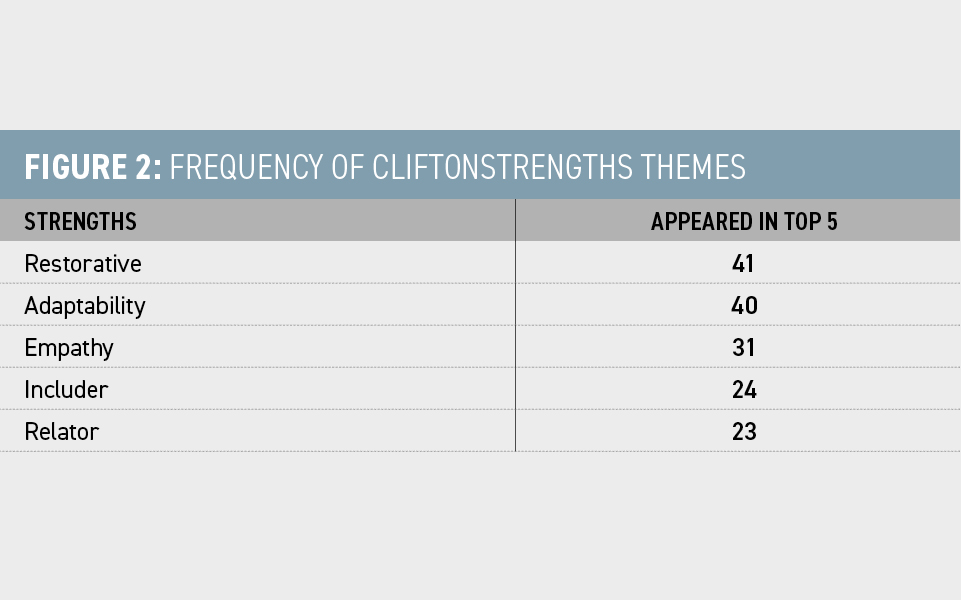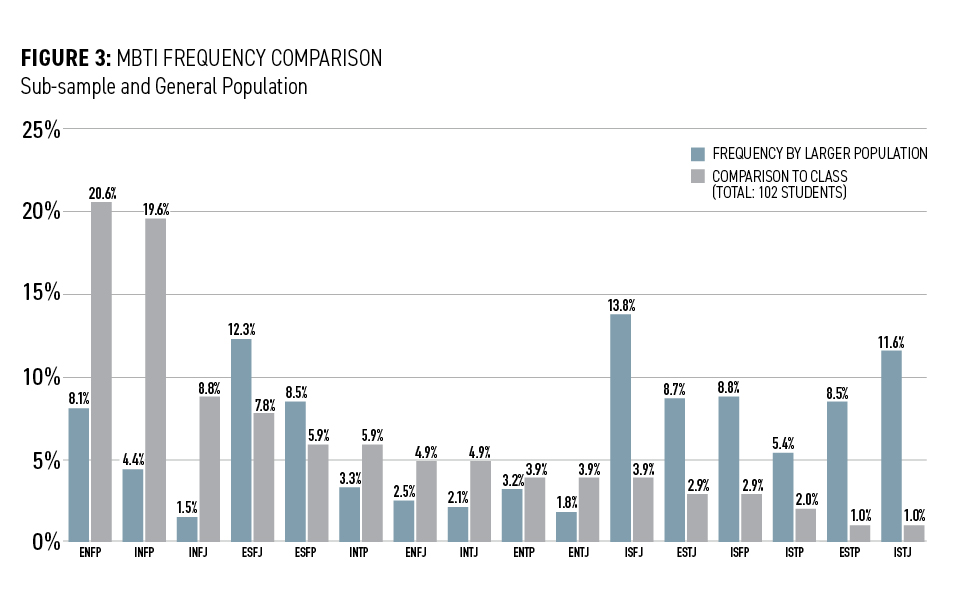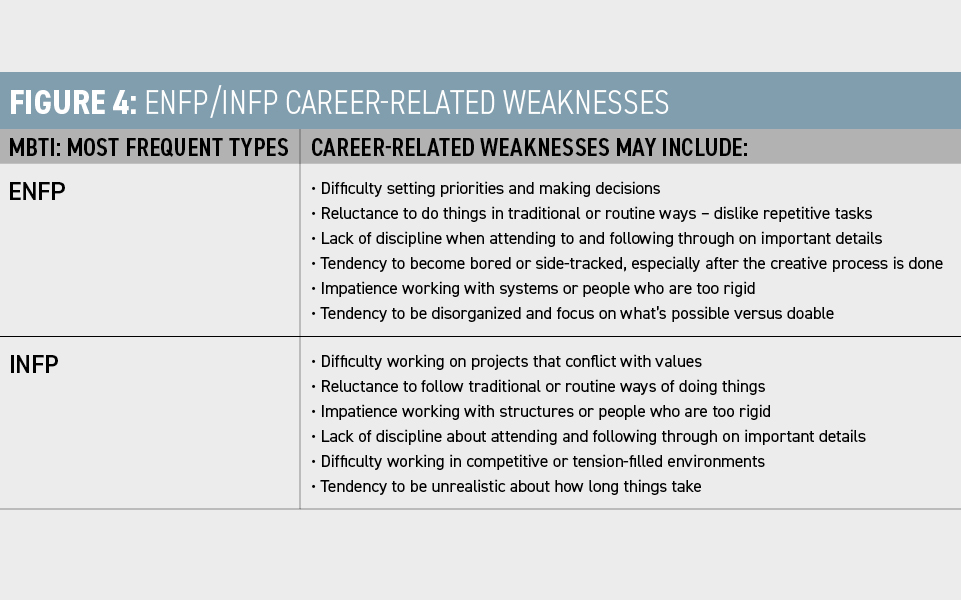NACE Journal, May 2019
In his book, The Paradox of Choice: Why More Is Less, Barry Schwartz describes the advantages and challenges of a world full of choices.1 A consumer economy brings with it the bounty of selection. We are bombarded with millions of choices in every sphere of life, from music playlists to career possibilities. And yet, more choice often brings more uncertainty.
As they strive to choose a major and career path, undecided college students come face to face with this dilemma. The variety of academic programs available to the modern prospective college student is substantial. The University of Cincinnati (UC), a large public university, boasts more than 300 degree programs spread out among 12 distinct colleges, representing nearly every academic discipline and profession. What’s more, UC students are asked to indicate their intended college and major upon applying to the university.
Many first-year students at UC, unable or unwilling to select a discipline at the beginning of their college career, find themselves under the auspices of the Center for Exploratory Studies. This program allows students to temporarily employ the term “exploratory” in place of a traditional academic major, granting them time to explore different major options and select an academic major to pursue. It also serves students who were not admitted to their first-choice major and have been forced to either improve their academic standing or consider other options. Collectively, these students make up approximately 6 percent of UC’s undergraduate population.
In the fall of 2018, our research team, operating out of UC’s unique Division of Experience-Based Learning and Career Education (ELCE), partnered with the Center for Exploratory Studies to develop a curricular offering for undecided students. We decided to customize a three-credit course that would be conducted as a semester-long pilot. A sample of first-year undecided students would be required to enroll in the course to support their major selection and career development. While this was the principal aim of the course, we hoped to simultaneously examine the nature of these students’ beliefs about college, major, and career.
A number of insights emerged from this work, both about the impact of the course on undecided students and about the psychological profiles of the students themselves.
Method
A total of 183 students, spread out across seven course sections, completed the pilot. Approximately 95 percent of these students were traditional college-age, first-year students exploring various career options. Each student participated in the 15-week course and shared his or her thoughts about major and career through both a pre-course and post-course evaluation.
The course itself consisted of eleven modules:
- The Value of College;
- Self-Discovery;
- Transferrable Skills & Choosing a Major;
- Resume;
- Networking;
- Defining Success;
- Career Design;
- Experiential Learning at UC;
- Preparing for an Internship;
- Interviewing; and
- Goal-Setting.
Each of these modules included a combination of lecture, video, self-assessment, reading, in-class activities, and reflection assignments. Ultimately, students compiled an individual development plan, including their personal career strengths, preferences, and academic and professional goals, complete with an anticipated timeline.
We simultaneously examined a sub-sample of 102 students to learn more about their personalities, strengths, and career philosophies. For this sub-sample, we collected their Myers-Briggs Types and top five CliftonStrengths and recorded their preferred career guidebook among three distinct choices.
Undecided Students Benefit From Early, High-Support, Major and Career Intervention
The full sample of 183 students completed a pre- and post-course assessment to determine major and career clarity. Their results revealed a significant increase in student clarity from the beginning to the end of the course. Upon enrolling in the course, 36 percent of these students had already selected a major, 50 percent had narrowed to a few suitable options, and another 15 percent had no idea how to go about choosing a major.2 After finishing the course, 67 percent of students had chosen a best-fit major, 31 percent were now considering a few options, and only 3 percent reported that they still had no idea how to go about the selection process. Though this progress cannot be entirely attributed to the course, it is clear that customized curriculum to support the major selection process increased students’ clarity.
As a follow-up question in the post-evaluation, students were asked whether their academic plans had changed since the beginning of the course: More than half (56 percent) reported that their plans had changed, while 44 percent reported that their plans remained the same.
When asked whether or not the course positively impacted them, 93 percent of students who took part in the pilot (including those who had selected a major prior to the start of the course) agreed that it had; 7 percent of students reported no positive impact. We asked those 170 students who were positively impacted to specify which components of the course they found most helpful. Figure 1 lists their coded responses in order of frequency.
We found that students described a variety of gains. They most frequently cited having the opportunity to reflect on their goals/career decisions (19 percent), taking personality assessments (16 percent), and finding internships/job-search skills (15 percent)as the most impactful components of the course. This suggests that the combination of assessments, practical skill-building, and dedicated time and space to explore career options is an effective strategy for addressing major and career indecision.

It is also worth noting that the tone of the course, beyond just the content, seemed of high importance to these students. In the pre-evaluation, when asked how the teaching team could best support them in the upcoming semester, 123 students responded with a variety of suggestions. Twenty-four of these students—a full 20 percent—asked for emotional support with responses such as “be kind and welcoming,” “guide me through this experience as it is all very new and scary,” and “help me become more confident.” These responses suggest that students find major and career decisions to be somewhat emotionally fraught. In addition, 10 percent named “validation/motivation” as their most impactful outcome at the end of the course, valuing this above any of the concrete knowledge or skills they gained.
This indicates that how we deliver career education can often be as important, if not more so for some students, as the content itself.
Undecided Students Are Relationship-Focused Problem-Solvers
Each of the 102 students in the sub-sample completed the Myers-Briggs Type Indicator (MBTI) and went through an individual or group verification process with a certified MBTI practitioner. Students also completed the CliftonStrengths assessment and shared their top five CliftonStrengths themes (out of 34 possible themes). Both their MBTI and CliftonStrengths results were recorded and analyzed for frequency. Figure 2 includes students’ most frequent CliftonStrengths results.

Restorative, a strength for identifying and solving problems, appeared in the top five themes of nearly half of the students in the sub-sample. According to feedback from our teaching team, many students in the course were quickly able to identify and voice potential problems with their prospective majors. It may be that the restorative strength, combined with adaptability, a strength around adapting flexibly to new situations, suggests a unique pattern. Students may find themselves caught in a vicious cycle of evaluating potential majors or careers, quickly spotting problems (or even imagined problems) with the course of action in question, and then using their adaptability strength to shift gears and identify a new possible path. Stuck in this cognitive loop, it may be more difficult for them to move forward.
It is also significant that four of students’ five most frequent themes fall into the “relationship-building” category, according to the CliftonStrengths classification system.3 Students’ orientation toward relationships represents an intriguing new lens to apply to this issue. In describing their strengths and major/career interests, students commonly referenced external influences, such as the interests and advice of family and friends. While this likely is not unique to undecided students, it nonetheless may imply a certain reliance on social support or approval for major/career choices. At a minimum, students often reported discussing major/career possibilities with loved ones in an attempt to choose a path, and again, often found themselves unable to move beyond these conversations to a place of commitment or action.
They may therefore lack a structured process for individually reflecting on their needs and moving through a decision-making process. Indeed, according to Figure 1, this was the most commonly reported positive impact of the course. This underscores the value of a course-based intervention, where students can engage in this process in a setting removed from their usual social influences.
Undecided Students Struggle to Find Their Place Within a Rigid College Structure
There were remarkably pronounced themes in students’ MBTI results. While we found a balanced mix of students with a preference for introversion and extraversion, intuition, feeling, and perceiving emerged as dominant results. The “NFP” combination was common, far beyond its normal occurrence in the generation population. Figure 3 compares the frequency of sub-sample students’ types with those found in the general population.

Forty percent (41) of the 102 students in the sub-sample reported either an ENFP or INFP result on the MBTI, in spite of the fact that there were 16 possible types. Figure 4 describes potential weaknesses of these two types.4 Clearly, while both the ENFP and INFP possess a number of strengths, making decisions with long-term implications is a challenge.

Of notable significance are the phrases “reluctance to do things in traditional or routine ways,” and “impatience working with systems and people who are too rigid.” Many colleges and universities, including UC, require students to declare a major in the first or second year of their undergraduate experience. This system, and the process of identifying and adhering to a potentially rigid set of academic requirements, presents a challenge for many undecided students. This challenge is even more pronounced for students whose major is linked to a specific career. In many ways, it is a system designed for students who have an early and specific sense of what their academic and professional path will look like. Those who prefer to explore, deliberate, or try out more than one path are forced to either prematurely narrow to a single direction, find a way to circumvent the process, or abandon school entirely. It is worth noting here that some students in the pilot did (or planned to) leave the college. Our data suggest that a more flexible system, designed to be responsive to the needs of modern and multifaceted students, would represent a more inclusive approach and may increase retention.
Undecided Students Embrace the Concept of Multipotentiality
The third item collected for students in the sub-sample was their preferred career approach. Each student had the opportunity to choose one of three divergent authors of popular career guidebooks and write a reflective essay on why that particular approach captured his or her personal career philosophy. Students explored each of these three thinkers through a series of in-class exercises and investigated each approach on their own before writing their essay.
The first author was Emilie Wapnick, a Millennial thought-leader who advocates for what she calls “multipotentiality,” the (sometimes simultaneous) pursuit of multiple interests or career paths.5 The second author, Cal Newport, promotes the focused development of a “rare and valuable skill” that will allow professionals to maximize rewards and autonomy in a competitive global market.6 The third author, Parker Palmer, is a prolific educator, spiritual leader, and activist who explores the importance of following your authentic inner voice and finding a way to be of service to the world.7 Our research team selected these three figures to represent diverse approaches to career and definitions of success. In aligning themselves with one of these three experts, students were forced to consider the rewards and challenges of each approach.
In the final tally, 18 of 102 students (18 percent) chose Parker Palmer, 19 (19 percent) chose Cal Newport, and 65 (64 percent) chose Emilie Wapnick. Their overwhelming support for Wapnick and the concept of multipotentiality is consistent with our earlier findings. Students embraced the idea of putting their (multiple) interests at the center of their academic and professional plans. They were drawn, in particular, to the idea that it is possible to thrive without ever needing to limit themselves to a single discipline.
In her reflective essay, one student wrote: “While growing up, kids are asked the infamous question of ‘What do you want to be when you grow up?’…toward the end of high school that question bothered me. I felt stressed and uncertain about what I really wanted to do. In [Wapnick’s] book, she brings up that you don’t have to go through your adulthood doing one thing and one thing only. There are ways people can do many things all at the same time. This new idea fascinated me because it gave me hope that my life didn’t have to be following a routine as most careers seem to be.”
Another wrote: “[Wapnick] would tell me not to get down if others judged my decisions. I have already experienced this from individuals because I went into college not knowing what I wanted to do. I now know that I am my own self and I am the only person to tell me who I am.”
Students shared a variety of reasons for embracing Wapnick’s philosophy, regardless of their interests, career plans, or, even, whether or not they themselves identified as a multipotentialite. Rather, they expressed feelings of relief, encouragement, and hope—the very things many craved at the start of the semester. Even if they did not plan to pursue multiple careers, students openly voiced their pleasure at the mere existence of an alternative to the traditional narrative of college and career. They were relieved simply to know that there are other possibilities. As students operating outside of the majority, they embraced a nontraditional thinker who validated the fact that their unique journeys, though sometimes stressful and uncertain, have value.
Taking students’ top five CliftonStrengths into account, we can imagine that the experience of being understood and accepted by someone like Wapnick may positively impact those students with the restorative and adaptability strength combination. As discussed above, these students often find themselves caught in the cycle of identifying possibilities, discarding them, and identifying new possibilities due to their strengths. Through the eyes of multipotentiality, this process can be reframed as something positive.
In her reflective essay, one student commented on this directly: “I also hope to find flexibility in my career, because this is a way in which I would be most successful and happy. For this multitude of reasons, Emilie Wapnick’s approach to career is the most valid and relatable approach in my life.”
Students’ ability to move quickly into new situations, and their desire to incorporate this talent into their careers, is critically important to them.
Recommendations for Career Services
Our exploration of first-year, undecided students’ strengths and career identities revealed a number of challenging ideas. They are a complex and innovative group, inclined to find their own way when the options before them do not seem to fit. It is not for lack of talent or passion that they find themselves undecided; rather, often it is a surplus of passions and career interests that leave them unwilling to foreclose on options.
Career services practitioners should consider the following as we work to develop innovative ways to serve undecided students:
- Undecided students may not respond to traditional career services as other students do. A one-time appointment during which students are provided with a large quantity of information and an accompanying list of resources may not adequately serve this population. A more effective approach would include multiple structured touch points over the course of a semester and, if possible, throughout their undergraduate experience. These touch points should include opportunities to reflect on personal strengths and goals, as well as support in developing and executing career plans. Ideally, students should be encouraged to explore experiential learning opportunities, such as co-ops, internships, practicums, clinicals, service-learning, study abroad, undergraduate research, or job shadowing. These experiences should always include time for students to reflect on what they’ve learned.
- Those students who struggle to narrow their interests to one or two majors should be encouraged to combine multiple academic programs if the school permits it.
- Practitioners should always provide high-support service, paying close attention to their tone. Undecided students are often sensitive to criticism and judgment about their multidisciplinary interests and should therefore be treated with openness and respect.
- Career educators and advisers should inquire about the source of undecided students’ academic and professional interests. They may be leaning on their personal relationships for career possibilities and counsel, without critically examining the values and motivations behind the choices of friends and family. Asking about these relationships, where appropriate, and pushing students to develop their own ideas and goals, should help move them through the decision-making process. Similarly, asking students to examine the reasons why they may have prematurely foreclosed on certain options will allow them to channel their problem-solving abilities and engage directly with their fears.
- Practitioners should encourage students to find like-minded peers or consider ways to support them in a group format. A number of students felt alone in their multifaceted interests and would benefit from efforts to normalize their approach to major and career. Wapnick’s book can serve as an introductory text for students interested in multiple paths. Her 13-minute TED talk, “Why some of us don’t have one true calling,” has more than six million views and can stimulate student conversation on the topic. In addition, practitioners should share examples of professionals who are pursing multiple careers or nontraditional career paths. These stories can both encourage and inspire students to embrace the challenges they will likely face.
As organizations strive to attract new talent, it may be formerly undecided students who bring innovative solutions when the traditional model no longer serves. Their strengths in relationship-building and problem-solving lend themselves to charting new territory and leveraging human resources to tackle intractable issues.
Career services practitioners can lead the way in recognizing and supporting students on the margins. To the extent that we can mold traditional academic systems to support these students, we can infuse curriculum with opportunities to consider the career-related strengths of this population. Directing their attention to the long view, and their possibilities beyond graduation, may encourage students to take better advantage of their undergraduate experience.
Endnotes
1 Schwartz, B. (2004).The Paradox of Choice: Why More Is Less. New York: Ecco.
2 Percentages have been rounded to the nearest whole number.
3 Rath, T. (2007). Strengths finder 2.0. New York: Gallup Press.
4 Tieger, P. D., & Barron-Tieger, B. (2007). Do What You Are: Discover the Perfect Career for You Through the Secrets of Personality Type. 4th ed. New York: Little, Brown and Co.
5 Wapnick, E. (2017). How to Be Everything: A Guide for Those Who (Still) Don’t Know What They Want to Be When They Grow Up. New York: HarperOne.
6 Newport, C. (2012). So Good They Can’t Ignore You: Why Skills Trump Passion in the Quest for Work You Love. New York: Grand Central Publishing.
7 Palmer, P. (2000). Let Your Life Speak: Listening for the Voice of Vocation. San Francisco: Jossey-Bass.






